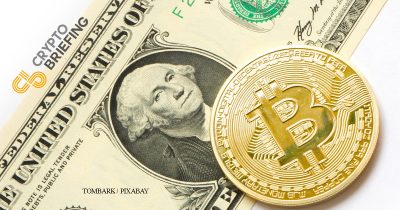Binance Research: 96% of Institutional Investors Are Embracing Stablecoins

Share this article
Binance has published a new Institutional Market Insights report with a partial focus on stablecoins. The results of the survey indicate that there is massive stablecoin adoption: all but 4% percent of respondents are using at least one stablecoin.
Though Binance has not commented on how stablecoins are being used, the broad answer is probably simple. Dollar-pegged stablecoins are typically used as a fast and inexpensive alternative to fiat withdrawals and deposits on exchanges.
Binance only collected its stablecoin data from 69 of its clients, so the results do not paint a comprehensive picture. However, the survey size is significantly larger than Binance’s previous efforts, and it does give some insight into the market.
Tether Is Dominant, But Concerning
Tether (USDT) is by far the most popular stablecoin among Binance’s clients. More than 40 percent of respondents indicated that they use Tether, citing the stablecoin’s high liquidity and large market cap as the reason for their preference.
Other stablecoins have a following as well: USDCoin has an adoption rate of 19 percent, while TrueUSD and Paxos both reach 13 percent. Meanwhile, MakerDAO Dai, Gemini USD, StableUSD, and Binance USD have adoption rates of six percent or less.
Binance also suggests that exchange-backed stablecoins like USDCoin and Binance USD “sparked more prominent interest” than fiat-backed stablecoins. Given Binance USD’s low adoption rate though, this claim is not entirely supported by the data.
Finally, Binance observed that 43% of respondents are concerned about Tether’s ongoing legal issues. “Tether remains the go-to stablecoin, yet [raises] questions from many market participants on whether the emperor has clothes,” it writes.
Market Capitalization Reflects Adoption
Binance also found that high-capitalization stablecoins tend to attract more adoption. “Putting the broader results in line…the overall use for each stablecoin is roughly in line with the rank of its respective market capitalization,” the researchers state.
This finding could temper some of criticism toward stablecoin issuers, who are often accused of minting tokens needlessly in order to artificially drive up the market cap. Tether, for example, jumped from a $2 billion capitalization in January to more than $4 billion in November.
If Binance’s data represents the larger market, stablecoin growth can be partially attributed to real demand. That said, adoption rates and capitalization are not exactly proportional: Tether has twice the adoption rate of USDCoin, but nine times its circulating supply.
Regulations Are Shifting
Binance has published its report at a time when stablecoins are under regulatory pressure. FinCEN, the U.S. Federal Reserve, and the G20 Financial Stability Board have called for stablecoin regulation and enforcement over the past few weeks.
Additionally, the Human Rights Foundation has just published a report calling for the opposite approach. It expresses concerns that regulatory compliance will force platforms to freeze stablecoins; it urges for private platforms instead.
These issues may not concern Binance’s institutional clients, as compliance tends to fall on exchanges and stablecoin issuers. Even if regulations grow tighter, it seems likely that institutional investors will continue to embrace stablecoins.
Share this article
